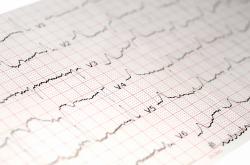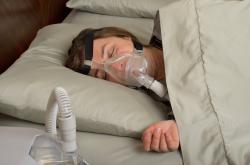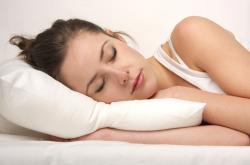Restless Leg Syndrome (RLS)
There are several disorders that can disturb your sleep – one of them is RLS (Restless Leg Syndrome). What are the symptoms of the disorder and how can RLS be treated?
What is RLS?
Restless Leg Syndrome, usually called RLS, and sometimes known as Periodic Leg Disorder, is the sensation that you need to continually move your legs while sleeping. The feeling can occur in the day, as well, sometimes in the evening while relaxing, or just when undertaking normal daily activities. Very often there are repetitive leg movements, which involve both legs. Sometimes there can be numbness and lightning stabs of pain as well. Often a person suffering from RLS will extend the big toe while flexing the ankle. Sometimes the knee will be flexed as well and sometimes the movement will extend to the whole body. Another pattern of RLS is defined by a disagreeable, uncomfortable leg sensation and sense of restlessness, which is brought on by rest, but relieved by movement.
It is estimated that at least a third of fibromyalgia patients suffer from RLS. The cause of RLS is not clear, but it does seem to be associated with a lack of dopamine. Whether this is simple cause and effect, or a more complex interaction, has not yet been determined. RLS can also be aggravated by the following factors:
- Lack of Iron – if you have blood ferritin levels of less than 50, you could consider iron supplementation. Iron deficiency occurs in about 15% of RLS sufferers.
- Nerve injuries – if you nerves have been injured in an accident or by a previous condition, you may be more prone to developing RLS.
- Deficiency in Vitamin B12 and folic acid – these can be part of the picture of RLS, but folic acid appears only to be deficient when lightening pain or numbness is also present.
- Hypothyroidism can also cause or contribute to RLS. Correcting the thyroid balance is a major part of the treatment in these cases.
- Certain medications can cause RLS as side effects – notably Elavil and Lithium.
Whatever the cause, it is important to treat RLS because it can add to tiredness and fatigue as it has the effect of waking the sufferer from a deep sleep into a lighter one, or forcing them to wake up.If your sleep cycles are interrupted, you will find yourself waking up with a groggy, ‘hung over’ feeling which can persist throughout the day and add to your fatigue. [Please seeWaking up during the nightfor more details about this issue.]
What are the symptoms of RLS?
As RLS tends to happen, for the most part, during sleep, you may not be aware of it in the onset stages of the condition.
However, there are several tell-tale signs of RLS. If you on a regular basis wake with your bedding in disarray, your sheets and blankets scattered and twisted up, then this may be an indication of RLS. If you sleep with a partner and they complain that you kick them in the night, this may indicative as well. Finally, if your legs feel jumpy and uncomfortable at night, then RLS should be seriously considered.
The condition can be confirmed in a sleep study in a special lab set up for monitoring behavior during sleep. If your legs contract in the night on a regular basis, usually every 20 – 40 seconds for a period of 5 seconds, then the diagnosis is confirmed.
What is the treatment for RLS?
It’s important to treat RLS as it affects the whole of your sleep pattern and can seriously contribute to daytime fatigue. It is also important to eat a sugar free (as RLS can be associated with hypoglycemia) and high protein diet. A protein snack before bedtime will help with cramps. There is a range of treatments, both natural, supplemental and prescription medication that will help the condition. It would be a good idea to begin with natural sleep aids. Please, readHerbal remedies for better sleepfor more information.
Iron supplementation
As noted above, about 25% of RLS patients have low serum iron levels. If the serum ferritin is below 50, then supplementation should be considered. It is important to do this under medical supervision, as too much iron in the blood can also cause problems. In fact, this treatment should be constantly monitored as iron build-up in the blood is toxic. Chelated iron or Chromagen Forte, which contains Vitamin C (which helps the iron to be absorbed) would probably be the best choice.
Vitamin E
Vitamin E is effective in the treatment of RLS but be prepared for the treatment to take a long time – typically 6 -10 weeks to show any improvement. Take 400 units a day.
Folic acid
This is only effective if you have numbness and lightening stabs of pain, which are relieved by locally massaging the area or moving. If this is the case, then take 5 mgs of folic acid, 3 times a day on an empty stomach.
L-Tryptophan
This supplement is hard to find because of a problem, which occurred in Japan some years ago with its manufacture. Although the problem was in the production, not the supplement itself, it has been banned from several countries. If L-Tryptophan is not available where you are, you could take 5-HTP, which is also effective, as an alternative.
Prescription medication
The following prescription medications all suppress RLS: Ambien, Klonopin, Neurotin, Gabitril. Bear in mind that prescription medications should only be used for a short time and that they suppress the disorder without curing it.
To sum up
There is much that you can do if you suffer from RLS. Try to get 8 to 9 hours of solid sleep a night. Start with natural sleep aids and reduce your stress as much as possible.





.jpg)








Leave a comment